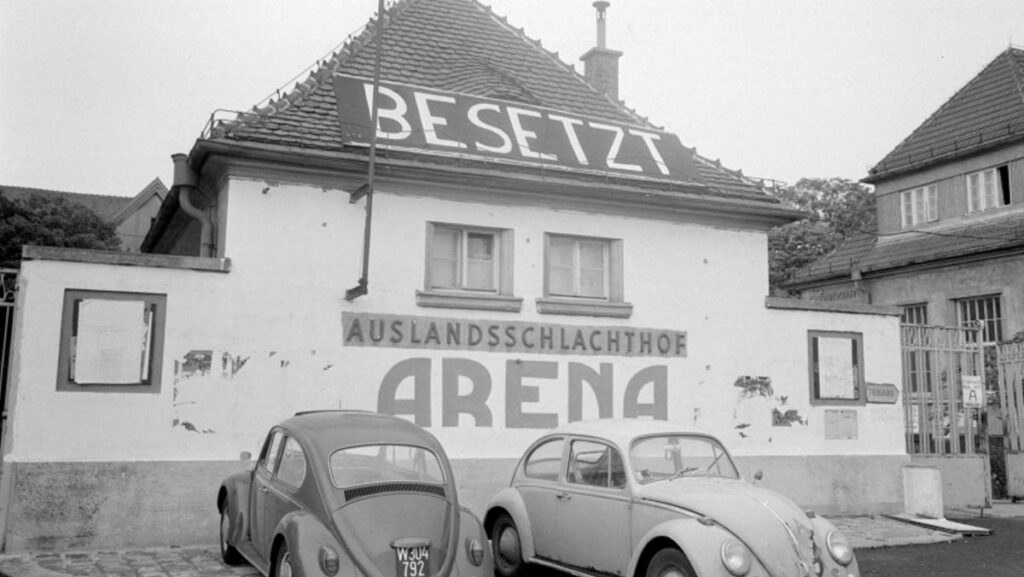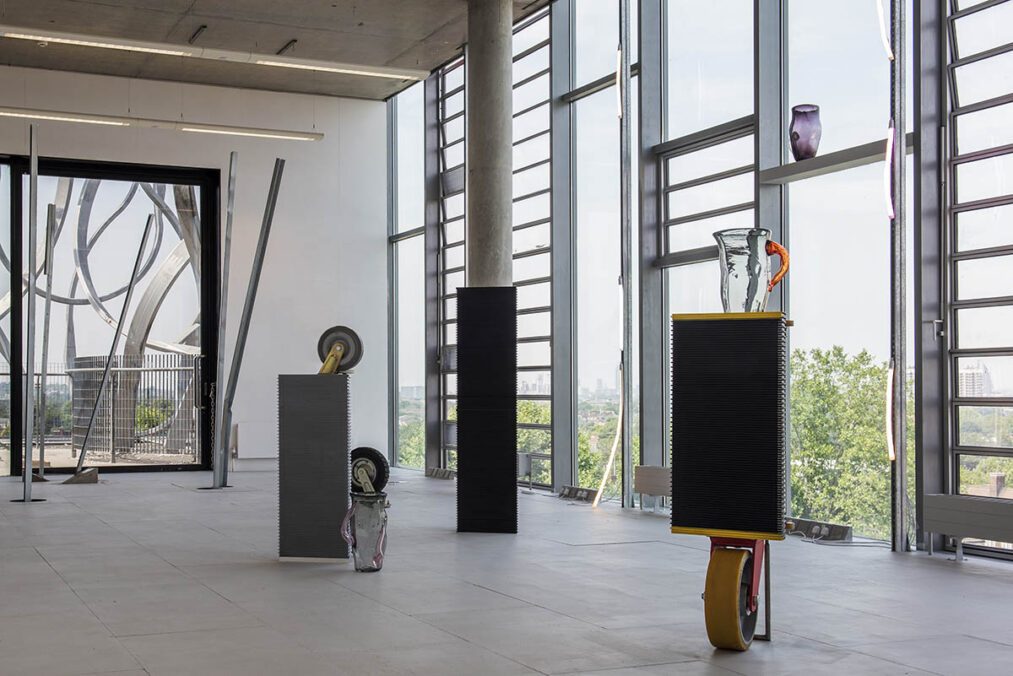
Using various materials leads her to different approaches regarding architecture and feminism. Each object carries unique connotations, qualities, functions, and values that evoke memories or behaviors. Some objects have masculine and feminine associations, and various value systems and functions are tied to either domestic or public and commercial spaces. Currently, she’s exploring the interplay between the natural and feminine within urban spaces, addressing the historical separation and challenges of nature, femininity, and the city.
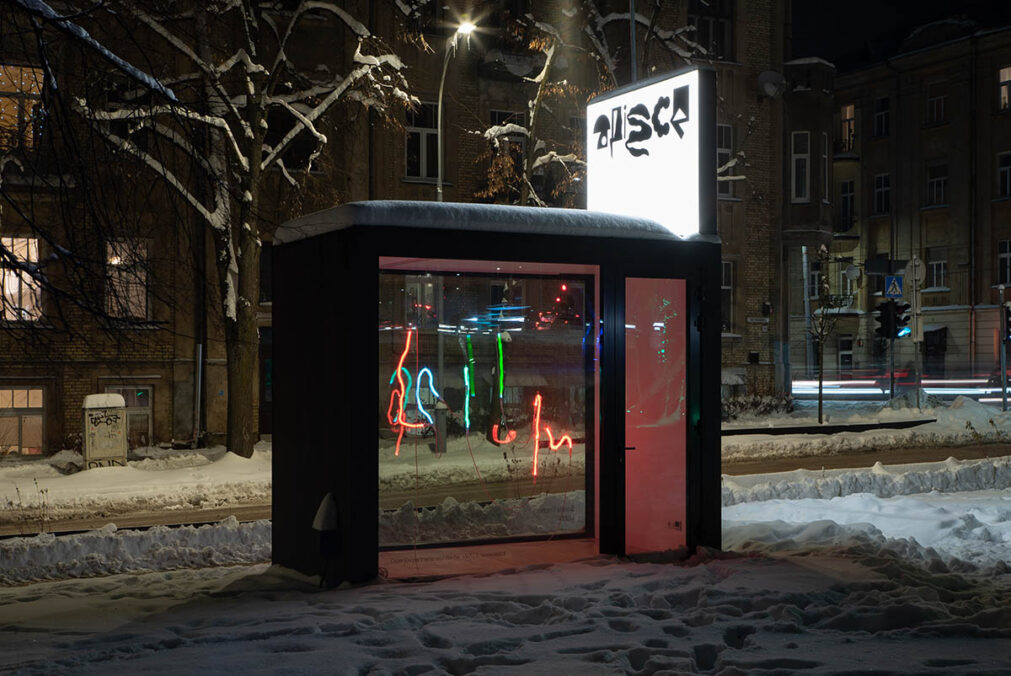
Saskia Fischer 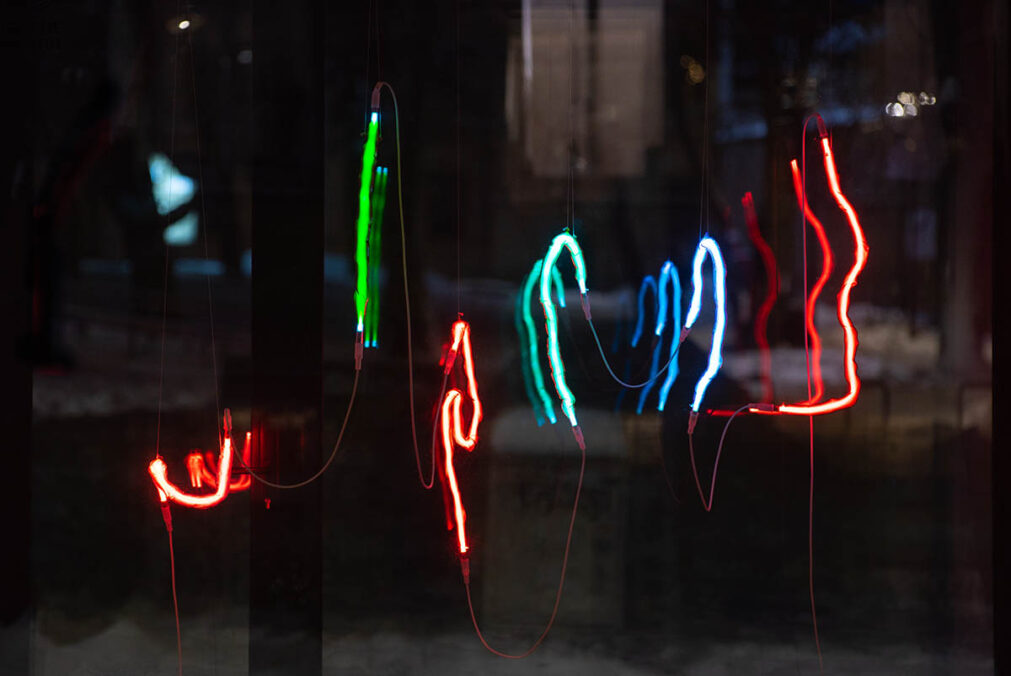
Saskia Fischer
How did transitioning from photography to sculpture change your view of our environment, power dynamics, and aesthetics that shape our lives?
It wasn’t so much the shift in artistic focus itself, but rather the circumstances I eventually found myself in, that changed the way I looked at my environment. There have been three initial moments that informed my perspective: Although things have started to change in recent years, when I studied photography in Germany, its discourses didn’t match my personal experiences. The theory talked about representation and reproduction but meant entirely different things than people my gender and sex were, and still are, confronted with. I spent part of my studies in Estonia. Seeing the ideological shift reflected in the altering natural and urban landscapes changed the way I looked at the environment. When later moving to London, questions of identity began merging with concerns around the cultural and ideological constructs of landscape. Now, I investigate these complex themes through an interdisciplinary practice, including sculpture, installation, text, and photography, expressed through motives taken from architecture, horticulture, gender studies, and art history.
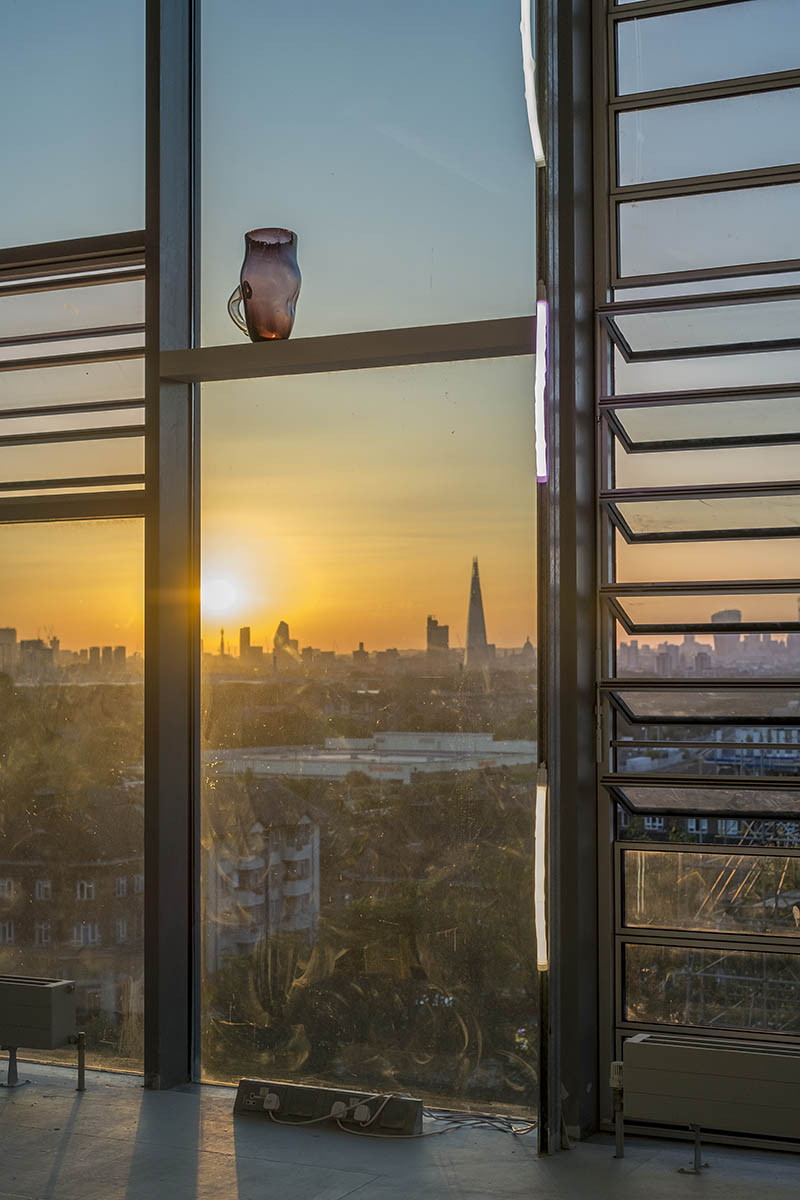
Saskia Fischer 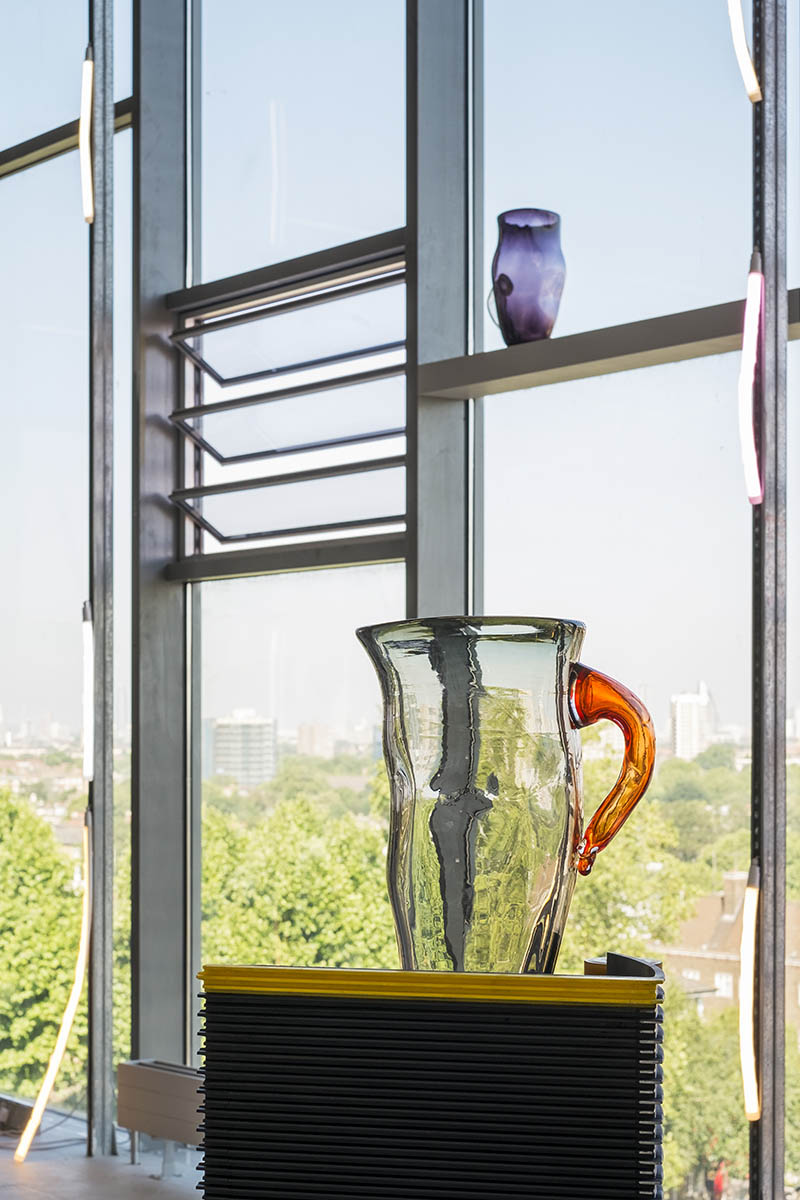
Saskia Fischer
According to Walter Benjamin true awakenings reshape reality by reconnecting the past to the present. How does this connect to your work in light art and neons concerning the relationship between identity and landscape?
I agree with the thought of memory connecting past and present and thus transforming what we perceive as reality. Such an awakening had been for me to realize that even in the most familiar places, for instance, the cities I used to live in, bodies like mine are denied consideration in their creation and history. Through this realization, my reality had changed. What I had previously assumed to be familiar had turned into estrangement. What I see around me are male cities, male buildings, male monuments, and male needs that provide form and function to urban space. I wish it were an exaggeration.
What was it like for you to address public and vitrine exhibition spaces in Vilnius with your light and neon art, particularly in terms of promoting visibility for female and queer individuals?
It was my best exhibition to date. The process was exhausting yet liberating and rewarding in its result. I’ve been working on this for so long, nearly one and a half years on this single piece. Without giving too many details, it’s been a real adventure. And in a way, this work has been my outing. A strong, celebratory statement without having to find the words.
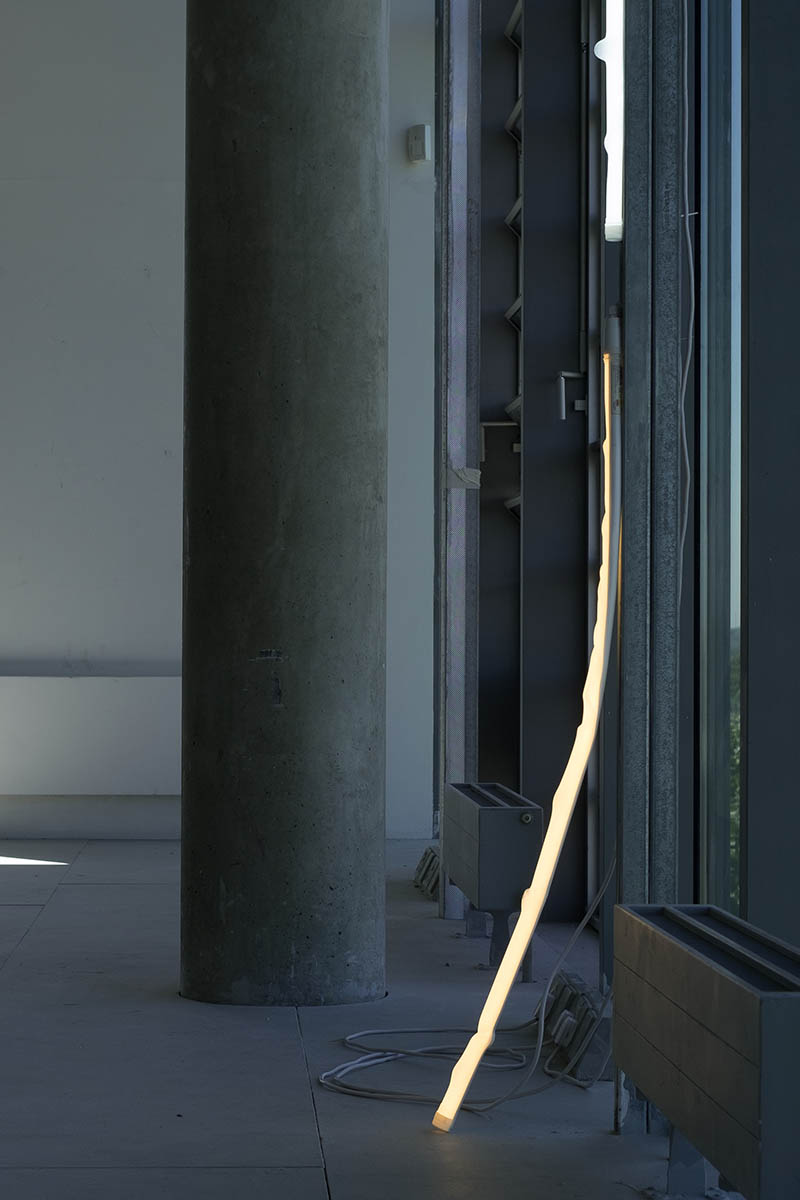
You mentioned that Lefebvre’s book, „The Production of Space,“ suggests society shapes space, influencing how we use and perceive it. The main question is: How can art help reveal the unseen in public space?
I think art can do it by becoming and offering a fictionalized perspective assembled of compounds found in reality and lived experiences, individual and collective memories. Lefebvre was such an eye-opener for me. This text helped me tremendously to understand what my work was doing, but more importantly what it could do! Then again, I don’t want to assign too much function to art. If we want to reveal unseen layers in public space, we should unveil our gaze; we don’t necessarily need art to do that for us.
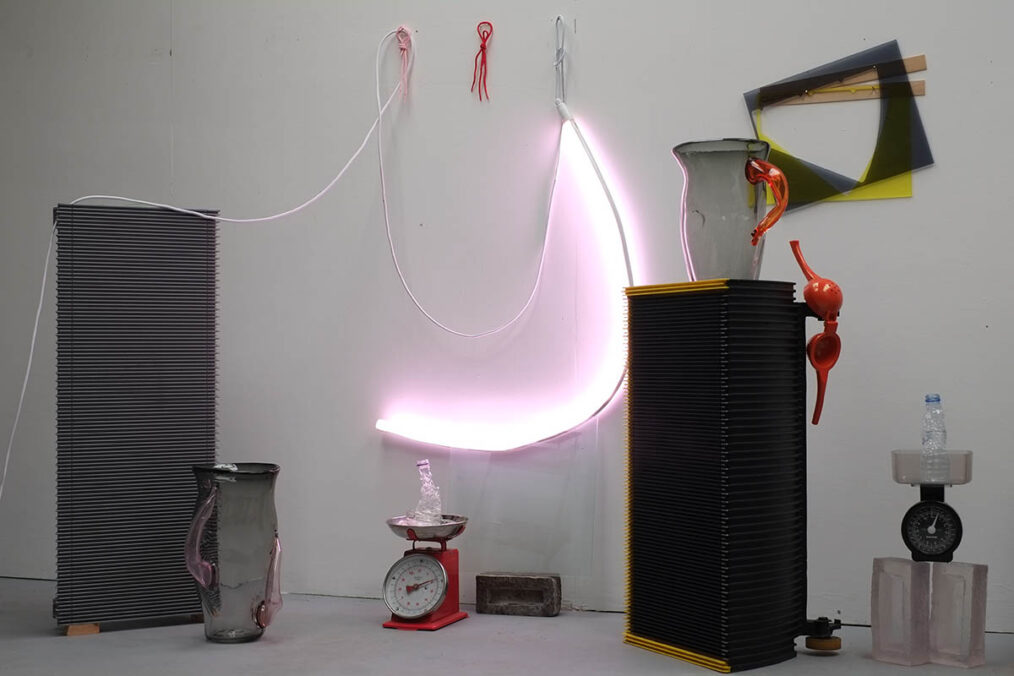
Your essay „The City is a Forest“ focuses on language as transformation, its adaptability based on demographics, power, and the economy. It raises questions about whether the city can truly belong to marginalized groups, like women and migrants. Did you reach any conclusions, or was your goal to initiate a public discussion on this topic?
I initially wrote this text – although very poetic – as my artist statement, to articulate my intentions and the complexities of self and environment. In the text, New York appears as „the concrete pit where I find stone to carve my sculptures“ to describe one of the cities I know and a place I dearly love and feel very inspired by. A few years later, I was at a residency in Switzerland when Natassa Pappa, founding editor of my all-time favorite magazine Desired Landscapes, commissioned me to write a second part to it. That’s when the text ultimately developed a life on its own, and the concept of Heimat entered. I since wrote a third, yet unpublished part in Nida last year that focuses on the notions of demarcation. Over the years, writing has become an important tool for collecting thoughts, influences, and addressing the personal layers of my work. However, my goal is less to draw conclusions but to describe a progression.
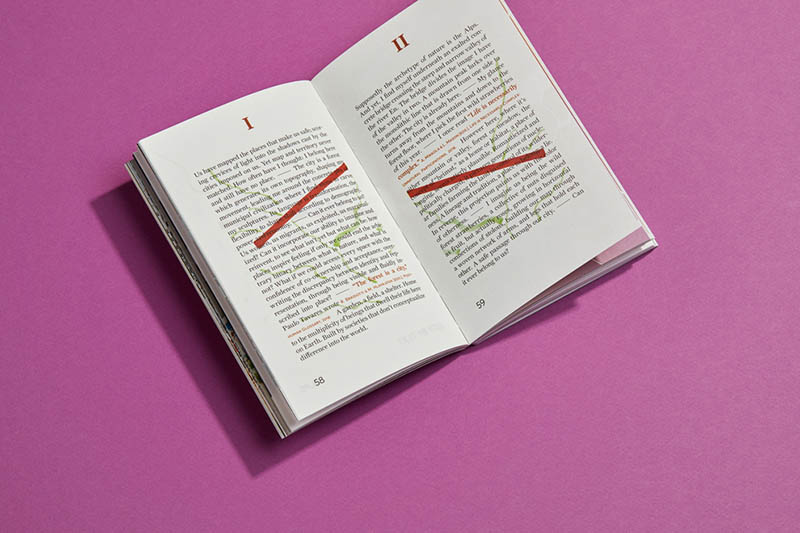
Can you share details about your graduation project at Goldsmiths in London and your first venture into sculpture, ‚État,‘ which served as both an homage and critique of urban life? It involved extensive research into gender-exclusion in architecture.
Everything I am doing today is built on État. When I started working on État, I was factually homeless for some months, yet with London I was in a place I always wanted to be. I felt so conflicted between the appeal of the city, my desire, and the fragility of my situation. I read Rem Koolhaas’s „Elements“ at the time, to understand the technological innovations that were necessary to make the construction of high-rises possible: sprinklers, elevators, escalators, etc. I thought, oh if I use a single escalator tread and flip it upside down, it would become a reflection of those high-rises. I combined them with precariously situated, feminine-shaped glass vessels and added huge industrial castors to them to underline the heavy mobility that carries London’s wealth. I loved these seeming contradictions within the materiality of the piece, yet that ambivalence resides in every place, not only London. I think that’s why it worked so well in État.
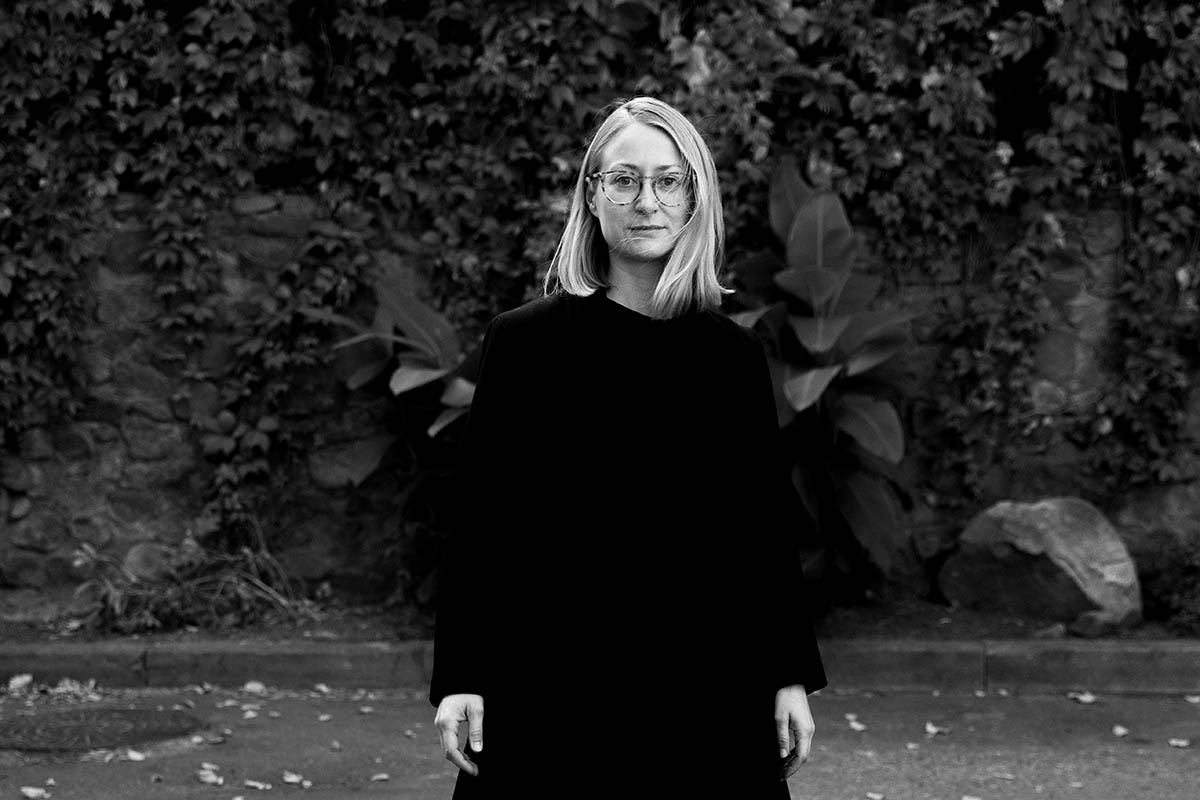
As an artist based in London, traveling exposes you to new places and diverse cultural ideas about city and nature. This offers a different perspective from art theory and philosophy, complementing your understanding. Do you believe that travel is essential for artists? Can it aid in exploring your identity concerning memory and its geographical connections?
I don’t think traveling is essential for artistic expression. If you want to participate in a specific segment of the art industry, it certainly is necessary. There are many reasons to criticize our industry and how it operates globally. I was born into a nomadic life and family. I don’t know any difference. Many of my personal relationships with family and friends abroad are built on memories more than they are on togetherness. Diaspora involves so much longing and missing.
Saskia Fischer – www.saskia-fischer.com
Saskia Fischer, an interdisciplinary artist, explores how landscapes reflect cultural and social values through photography, installations, and mixed media. She has studied fine art at Goldsmiths, University of London, photography at Folkwang University, and sculpture/installation at the Estonian Academy of Arts.
Lenka Stepankova is an interdisciplinary artist, specializing in video and painting. She is currently a doctoral student at the Academy of Arts, Architecture, and Design in Prague. Lenka’s doctoral project explores historical contexts and contemporary representations of female artists in the Czech Republic, providing new insights into selected creators. www.instagram.com/lenka_stepan/




